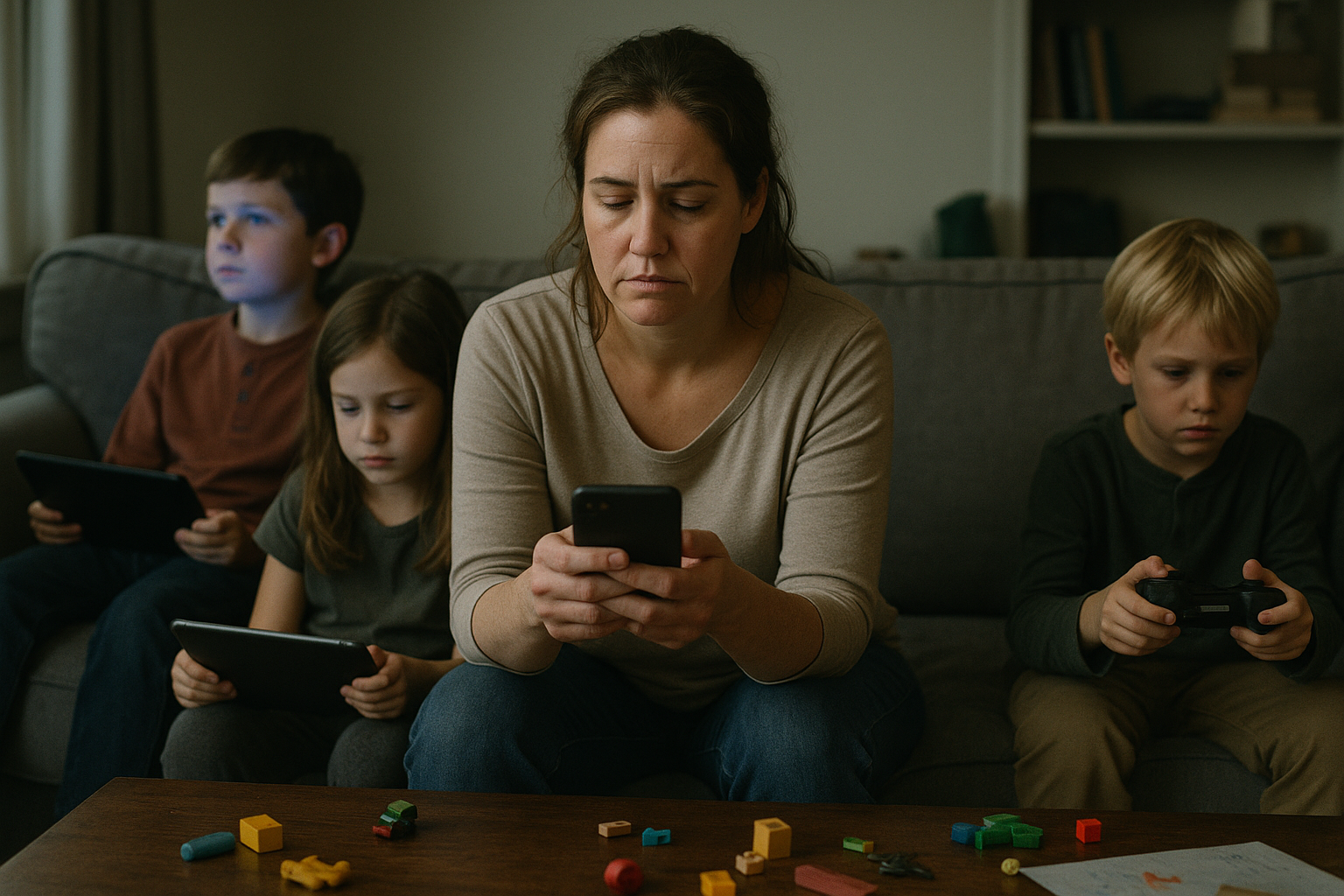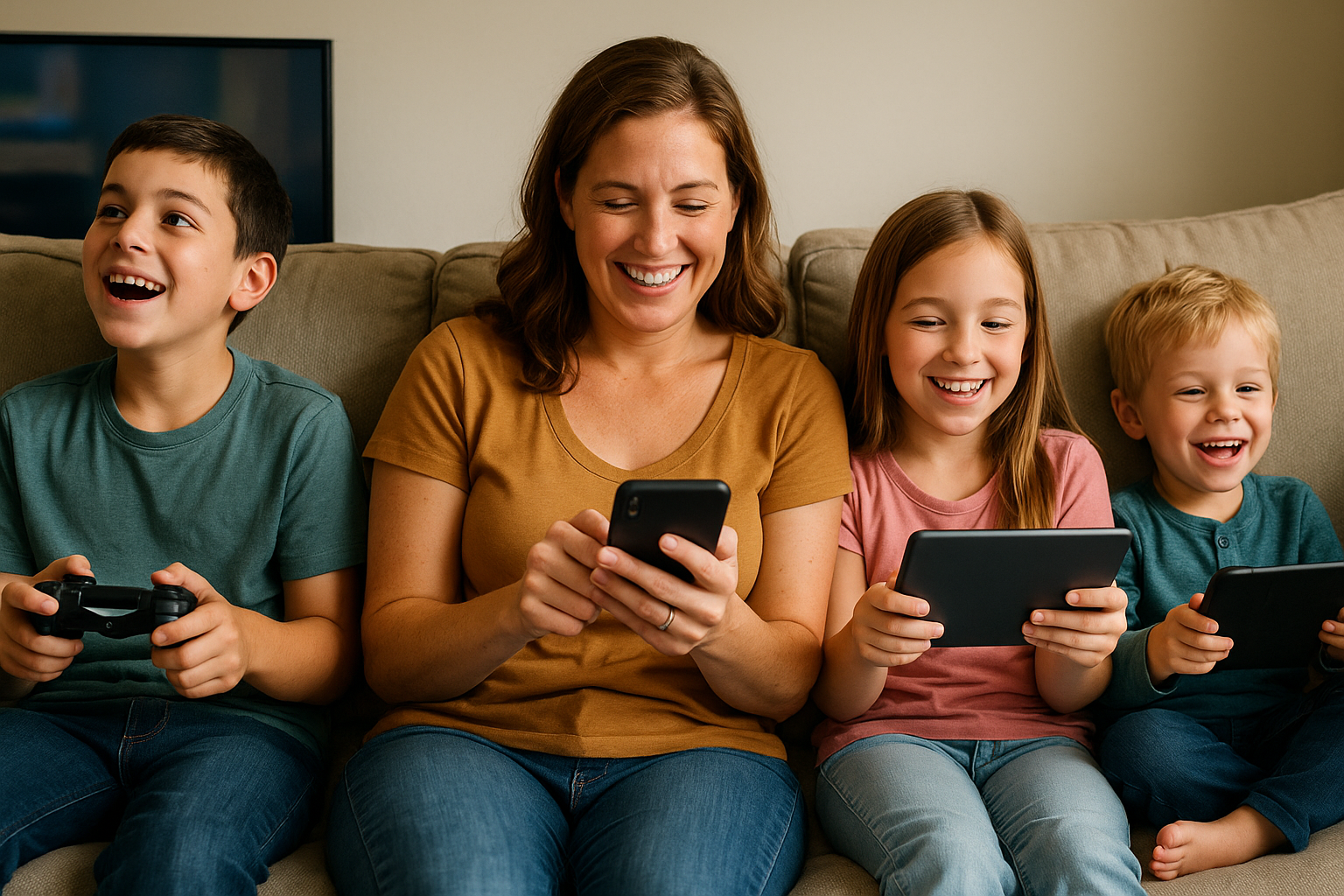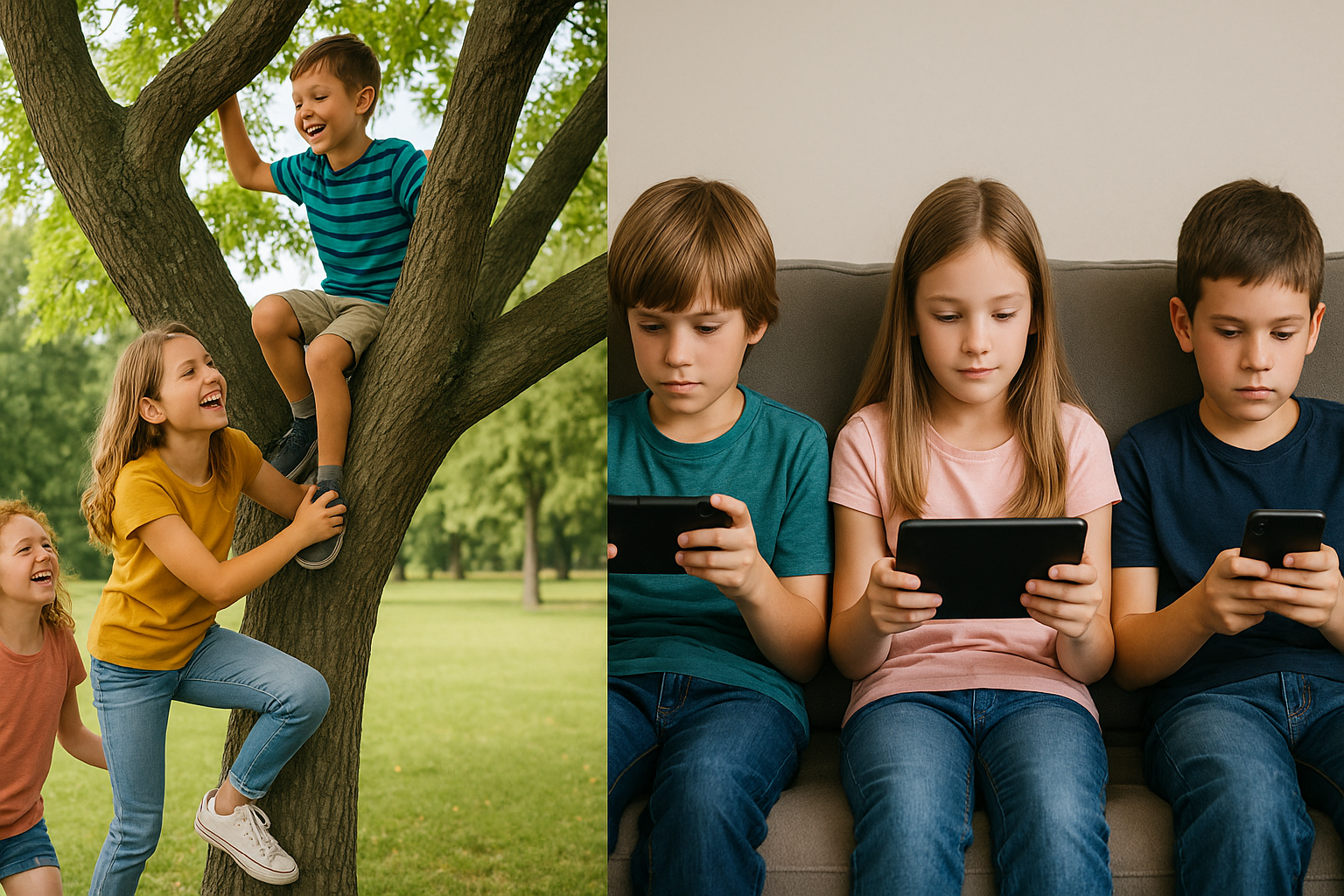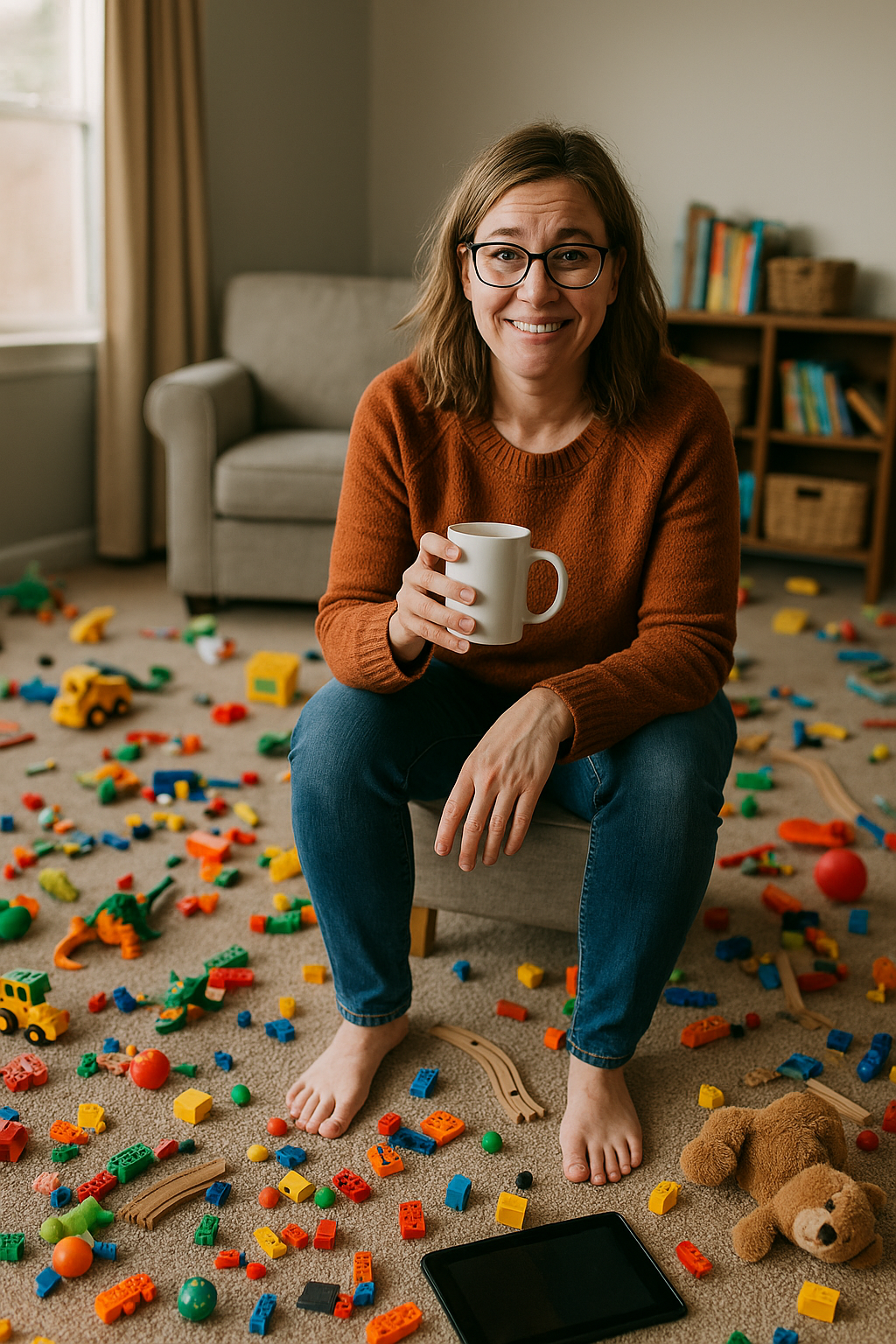- Jul 10, 2025
Do the Benefits of Technology Outweigh the Risks for Kids Today? (And How to Set Screen Limits Without Losing Your Sanity)
- Sabrina Ragan
- Navigating Parenting Challenges
- 0 comments

Have you ever looked up from your phone only to realize your kids have been zoned out on screens all morning… and somehow it's lunchtime?
You're not alone.
That happened to me recently. My kids were deep into their shows and games, I was on my computer catching up on work messages, and the whole house was quiet. Too quiet.
I looked at the clock, and my heart sank. I did it again...
We had completely missed breakfast.
It was now lunchtime, and everyone was on their own screen. No one had been outside. No one had even talked to each other. And I felt this overwhelming wave of mom guilt. A voice in my head whispering:
“You’re lazy. You should be engaging more. They’re going to grow up with mush for brains and zero imagination.”
This is seriously what runs through my head when this happens. So much mom guilt. So much guilt as a psychologist. I tell myself I should know better and do better, but it is so easy to get lost in time.
As a child psychologist, I know that screen time has real developmental consequences. But as a mom of three in a small house trying to keep the peace, I also know how screens can help.
This post is for the in-between.
The real-life space where moms like us live, doing our best with what we’ve got. Trying to both survive and thrive.
Why Kids Love Screens (and Why We Do Too)

Screens trigger a biological response that feels good. Every time your child levels up in a game or finishes another episode of their favourite show, their brain gets a little dopamine hit —the feel-good chemical —just like we do when we check a notification for email or social media. It creates a sense of excitement, and that feeling keeps us coming back for more.
It’s not weakness. It’s biology.
Plus, our kids are growing up in a world where screens have always existed. Many toddlers can swipe and tap before they can talk. Technology is part of their environment, but that doesn't mean unlimited access is healthy.
The Risks of Too Much Screen Time
While screens aren’t inherently bad, overuse, especially in young kids, can cause real challenges:
Sleep disruption
Delayed language development
Mood swings or irritability
Difficulty focusing
Reduced social and imaginative play
Less time outdoors and moving their bodies
Childhood obesity
Poor social skills

Did you know the average child in the U.S. spends 4–7 hours a day on screens… but only 4–7 minutes playing outside? That stat shocked me when I read it and completely stopped me in my tracks. I honestly couldn’t believe it, especially considering how much time kids already spend in school. It means that between school and screens, outdoor play has been reduced to just a few minutes a day. The truth is, this kind of imbalance really does matter.
But here’s what I don’t want:
More mom guilt.
We can acknowledge the risks and use tech in intentional, balanced ways. The key is balance, and teaching our kids how to use it responsibly and regulate themselves with it.
How to Limit Screen Time Without Losing Your Sanity

Here are practical, neuroscience-backed strategies I teach in my latest video and use in my own home:
1. Use Timers (They’re Gold!)
Set a timer for screen time—for your kids and for yourself.
It might seem like a small thing, but it makes a big difference. Timers create structure. They give a clear ending, which helps reduce pushback and power struggles, because everyone knows what to expect.
In our house, I use timers all the time. If the kids are playing a game and need to take turns, I set one so that no one feels left out or argues about who had more time. It keeps things peaceful and helps my kids feel safe and seen.
Such a simple tool… but it’s been a total game-changer.
2. Create a Screen Time Routine
Structure beats spontaneity here.
For example:
1 hour of screen time after lunch
No screens before breakfast or after dinner
Screens only after outdoor play or chores
Keep it consistent, and it becomes second nature.
3. Use Visual Tools Like Posters or Tokens
Make a “Boredom Busters” board filled with non-screen ideas:
📚 Reading | 🧩 Puzzles | 🎨 Arts & crafts | 🪁 Backyard play
Or try screen time tokens: kids “spend” tokens for screen use and can earn more by completing chores or engaging in creative play.
4. Replace Screen Time with Real-Time
The more engaging your alternatives, the easier it is to unplug.
Try:
Backyard bug hunts
Craft stations
Imagination games (my son’s favourite)
Baking together
Family “quiet time” with books and journaling
5. Set "No Screen" Zones
Choose times and places where devices go away — like:
Mealtimes
Bedrooms
First thing in the morning
1 hour before bed
Have a central charging station where all devices rest during those hours.
When Screens Can Be Helpful
Not all screen time is bad.
Used with purpose, tech can:
Provide downtime after busy days
Offer connection (FaceTiming grandparents)
Support learning and creativity
Give you a breather when needed
It’s not about zero screens, it’s about balance and boundaries.
But What If My Kids Have a Meltdown?
They will. I can promise you they will have a meltdown. Initially, the more structure you put in place, the harder they will try to push through that boundary.
At first.
Change is uncomfortable. Children often struggle with transitions, particularly those with sensitive personalities.
But with calm consistency, clear expectations, and empathy, you’ll see those transitions get easier.
When they protest, try saying:
“I know it’s hard to turn off something fun. It's okay to be upset about it. Let’s pick something new to do together.”
Screens are addictive — but they’re not the boss.
You are.
And you can lead with love.
Final Thoughts: It’s Not About Perfection

This is far from never letting your kids touch a screen again.
It’s about giving them (and you) the space to experience more.
More imagination.
More creativity.
More connection.
The next time you realize everyone’s been on a device too long, pause.
Take a breath.
And make a small shift. One moment of intention can change the tone of your whole day.
You don’t need to do it all.
You just need to start.
Related Resources:
🎥 Watch my full video on this topic: How to Manage Screen Time and Still Keep Your Sanity This Summer
🧘♀️ Join the Peaceful Family Challenge – 7 Day Reset: Sign up here
💌 Get my free Parenting Survival Guide straight to your inbox: Download Here
“Sometimes you have to disconnect to stay connected.”
— Regina Brett
Sabrina Ragan is a child psychologist, registered play therapist, and mom of three who helps overwhelmed moms raise emotionally secure, resilient kids using brain-based, attachment-focused strategies. She’s the creator of The Parent’s Connection—a supportive space for moms who want to parent with more confidence, calm, and connection. 💛
Free E-Book
Parent's Ultimate Survival Guide: 17 Life-Saving Strategies to Keep Your Cool During Your Kid’s Meltdown
Stop feeling overwhelmed by meltdowns.
This free guide offers brain-based strategies and practical tips to stay grounded, respond confidently, and build a stronger connection with your child, no matter how intense the moment gets.